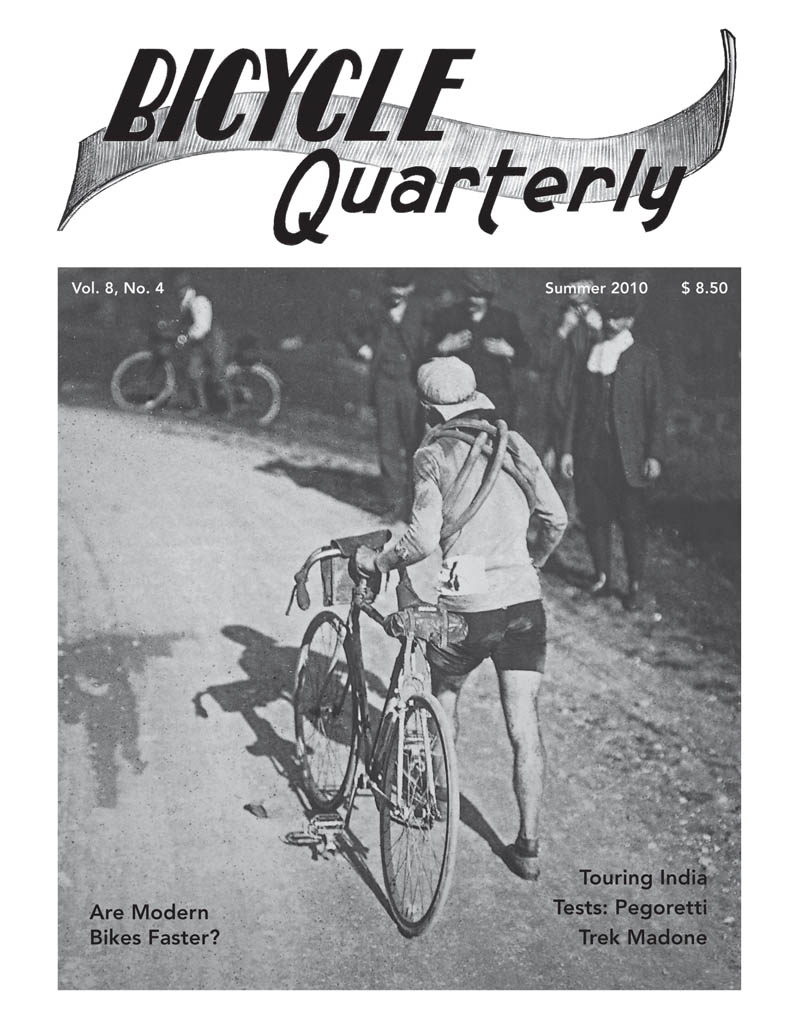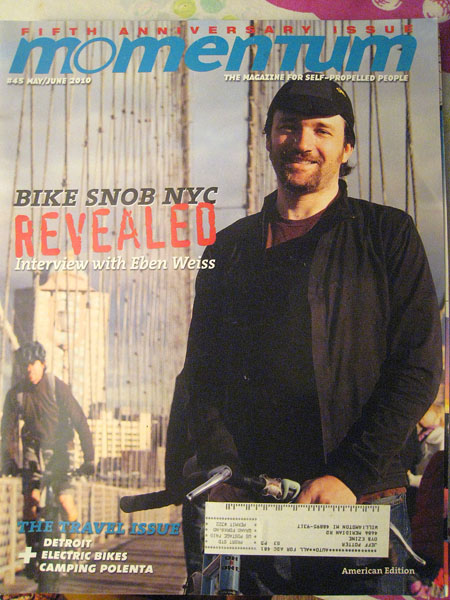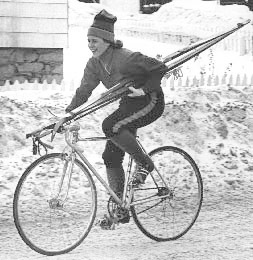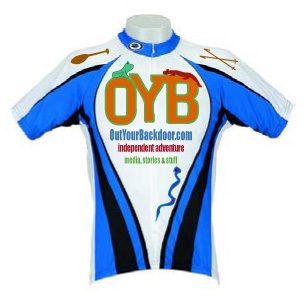[Click on link to order this issue for $8.50 from the “BQ” publisher. An annual subscription is $30.]
“BQ” is distinctive, some might say quirky, but it’s also a magazine that cares enough about enthusiast cycling to be candid and to push — despite a micro-budget — for a relevant level of clarity about the still-murky subject of bicycles. I mean, we still don’t really know what makes a bike good for each purpose, but “BQ” does its best to explore the subject, pushing to go beyond other reviewers and testers. It seems to have its druthers and favorites, like any rider or any magazine, but (thankfully) their style emphasizes versatility plus liveliness without slavishness to the most expensive.
From the desk of the “BQ” editor, here’s what they do in this issue:
We look at racing bikes and their influence on technology and performance. Bicycle technology has advanced a lot since Octave Lapize walked up the Izoard on his way to win the Tour de France, as shown on the cover.
We test two state of the art racing bikes:
Trek Madone, a modern carbon fiber bike similar to the machines ridden by Lance Armstrong to multiple Tour de France victories.
Pegoretti Love 3, a machine from Italy, where many of the best racing bikes have been crafted. Pegoretti updated the traditional racing bike with new materials (aluminum) and ideas (oversize chainstays).
Riding these modern, superlight bicycles inevitably leads to the question: Are modern racing bicycles are faster than traditional machines? We analyze speeds in the Tour de France and Milan-San Remo to obtain an unbiased answer.
How did racers train in the past? We bring you training advice from 1939. Did you know that racers should not eat asparagus? However, the ideas about bike fit haven’t changed much in 70 years…
We also examine 1920s geometries to find out why racers used such shallow head angles. We adapted a modern bike to mimic the riding position and geometry of a 1920s machine.
We look at two performance bikes for children. We test the Redline Conquest 20 and show how a Kona Jake 2-4 can be converted into a “real-world” bike for an older child.
Frans Pauwels was instrumental in getting bicycle racing established in Portland, Oregon. Read about Pauwel’s racing career in Europe. After he emigrated to the U.S., he helped Portland get started on its path that has made it one of the most bike-friendly cities in North America, if not the world.
Our classic bike feature shows a 1982 Colnago with a twist: Built for a short world champion, it is equipped with smaller wheels.
There is more to cycling than racing: A Tour of India on an upright three-speed bicycle is a true adventure. Read how a former bike racer adapts to riding a very basic machine, and about the people she meets and the sights she sees.
As always, there are product news, book reviews, “My favorite bike” and much, much more in the new issue of Bicycle Quarterly.
https://www.vintagebicyclepress.com/subscriptioninfo.html




